Latest Evolutions in Generative AI: Multimodal, Real-Time, and Beyond
Published: 2025-09-10
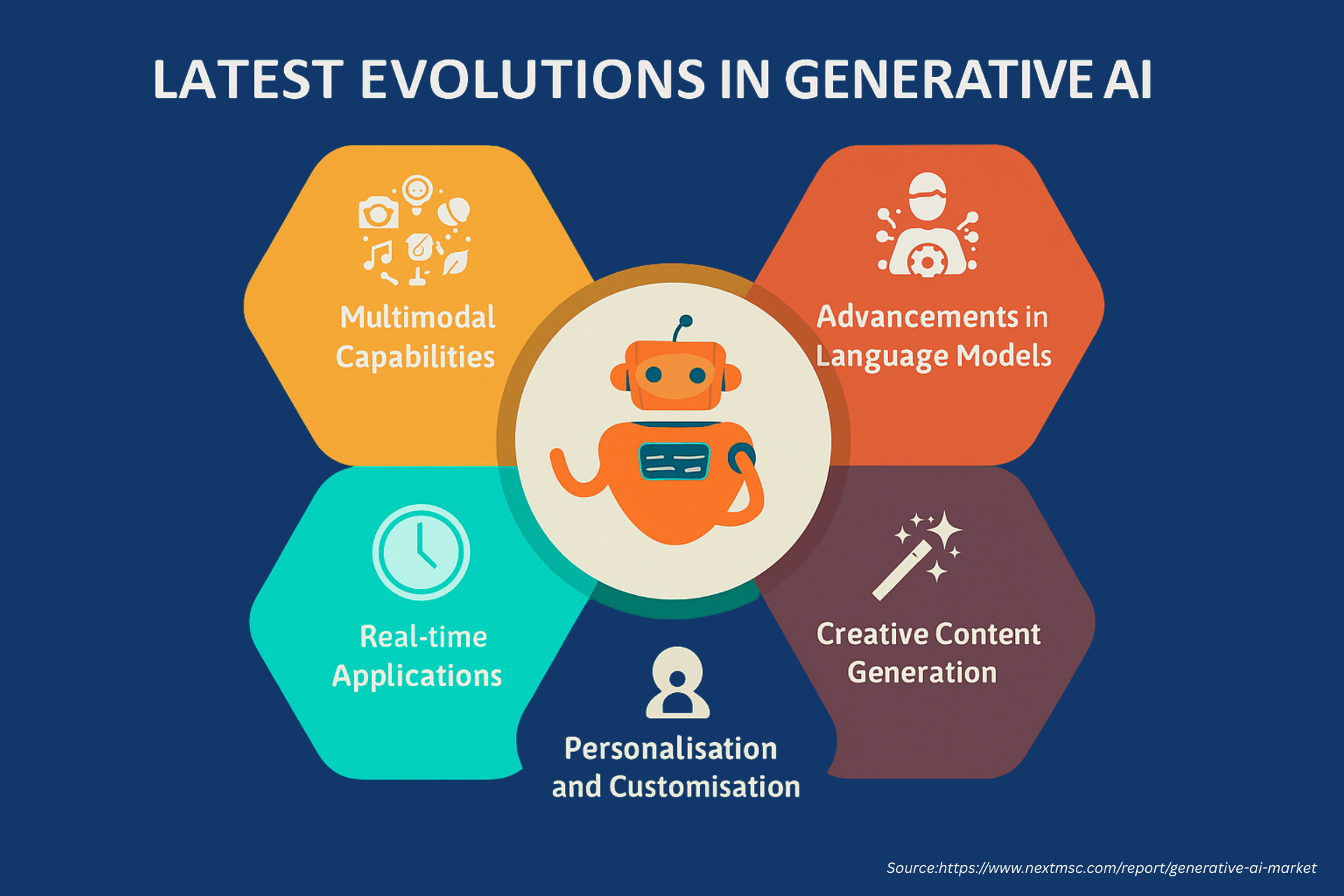
Generative artificial intelligence (GenAI) employs advanced algorithms to transform vast, intricate datasets into structured representations—typically by embedding information in a high-dimensional “vector space” where data points are organized according to their correlations. When given a prompt, it then leverages that embedding to decode and synthesize new content—whether text, images, or audio—by locating and recombining the most relevant patterns and relationships within the vector space.
Generative AI is advancing at breakneck speed, reshaping how we create, communicate, and consume content. In 2025, five key trends stand out: multimodal capabilities, language-model advancements, personalization, real-time applications, and creative co-creation. Each reflects a shift toward richer, more interactive, and highly tailored AI experiences.
Multimodal Capabilities
Modern multimodal AI systems combine information from text, images, audio, and even video to create richer and more context-aware outputs. By ingesting diverse data types through specialized processing “pipelines,” these models learn to align representations across modalities—enabling them to, for example, generate detailed image captions, answer questions about videos, or create illustrative graphics based on textual prompts. Leading examples include:
-
GPT-4 Vision: OpenAI’s model accepts text and image inputs, generating detailed captions, answering visual questions, and even producing graphics based on descriptions.
-
Gemini 2.5 (Google AI Mode): Powers complex multimodal conversational queries within Search Labs, supporting text, voice, and image inputs for follow-up dialogue.
Advancements in Language Models
The past year has seen significant leaps in natural language understanding, driven largely by model scaling and refined training methods. OpenAI’s GPT-4.5 “Orion,” released February 27, 2025, demonstrates stronger pattern recognition, a broader knowledge base, and reduced hallucinations thanks to advanced unsupervised learning and reinforcement learning from human feedback. Meanwhile, the GPT-4.1 series introduces models with extended context windows up to one million tokens, markedly improving long-document coherence and coding prowess—on recent benchmarks, GPT-4.1 outperforms its predecessors by over 20 percentage points on coding tasks and instruction following. These iterations underscore a trend: balancing unsupervised pretraining with targeted reasoning enhancements yields systems that are both more creative and more reliable.
Personalisation and Customisation
Generative AI is increasingly tailoring content to individual users through adaptive interfaces and recommendation engines that learn from behavior, preferences, and context in real time. Over 90 percent of organizations now leverage AI-driven personalization to drive growth, using deep learning and predictive analytics to segment users, adjust layouts, and curate content dynamically. Adaptive User Interfaces (AUIs) reshape menus, dashboards, and workflows on the fly—presenting simplified views for newcomers and advanced controls for power users. These personalized experiences boost engagement and satisfaction, with studies showing up to a 30 percent uplift in conversion rates when interfaces evolve alongside user needs.
Real-time Applications
The demand for on-the-fly AI services has driven development of real-time features such as live translation, transcription, and summarization. AWS’s new Chrome extension integrates Amazon Bedrock foundation models to transcribe and translate live streams directly in the browser—generating concise summaries as speech unfolds. Similarly, Google Meet’s real-time live translation (powered by Gemini AI) can convert spoken words into another language while preserving the speaker’s tone and inflection to facilitate seamless cross-language meetings. These tools exemplify how generative AI is moving from batch processing into interactive, low-latency scenarios.
Creative Content Generation
Generative AI has rapidly evolved since 2020, transforming from basic pattern-replication tools into powerful creative collaborators. Text generation advanced with models like GPT-3, ChatGPT, and GPT-4, revolutionizing storytelling, marketing copy, and content creation. Visual AI made breakthroughs with DALL·E, Stable Diffusion, and Midjourney, enabling high-quality images from simple text prompts. Music and audio tools like Suno now compose full songs from descriptions, while video generation gained momentum with models like OpenAI’s Sora, creating short, realistic video clips from text. 3D content generation also progressed through tools like DreamGaussian and Shutterstock’s AI-powered 3D services. These innovations have reshaped industries such as entertainment, advertising, design, and education by making creative processes faster, more accessible, and collaborative between humans and AI.
|
Capability |
Primary Application |
Example Tools/Models |
|
Multimodal Capabilities |
Cross-modal understanding & generation |
GPT-4 V(ision), Google Gemini |
|
Advancements in Language Models |
Improved NLU/NLG, long-context reasoning |
GPT-4.5 “Orion”, GPT-4.1 (1M token context) |
|
Personalization & Customization |
Adaptive UIs & content recommendations |
Recommendation engines, Adaptive User Interfaces |
|
Real-Time Applications |
Live translation, transcription, summarization |
AWS Bedrock browser extension, Google Meet AI |
|
Creative Content Generation |
AI-assisted art, music, storytelling |
Stable Diffusion, Midjourney, AI music generators |
In summary, organizations can harness the latest generative AI advancements by integrating multimodal APIs, leveraging extended context models for complex tasks, and deploying real-time AI solutions for enhanced accessibility. Implementing personalization pipelines can drive user engagement, while fostering creative AI workshops encourages innovation and cross-functional collaboration. Embracing these strategies will position businesses at the forefront of AI-driven transformation.
About the Author
 Debashree Dey is a seasoned Content Writer, PR Specialist, and Team Leader in Digital Marketing, known for her expertise in crafting online visibility strategies and navigating the dynamic digital landscape. With a flair for developing data-driven campaigns and producing compelling, audience-focused content, she helps brands elevate their presence and deepen user engagement. Beyond her professional endeavors, Debashree finds inspiration in creative projects and design pursuits.
Debashree Dey is a seasoned Content Writer, PR Specialist, and Team Leader in Digital Marketing, known for her expertise in crafting online visibility strategies and navigating the dynamic digital landscape. With a flair for developing data-driven campaigns and producing compelling, audience-focused content, she helps brands elevate their presence and deepen user engagement. Beyond her professional endeavors, Debashree finds inspiration in creative projects and design pursuits.
About the Reviewer
 Supradip Baul is the CEO and Founder of Next Move Strategy Consulting, driving the firm’s mission to provide data-driven insights and strategic intelligence. With extensive experience in market research and consulting, he has helped global organizations make informed decisions and achieve sustainable growth.
Supradip Baul is the CEO and Founder of Next Move Strategy Consulting, driving the firm’s mission to provide data-driven insights and strategic intelligence. With extensive experience in market research and consulting, he has helped global organizations make informed decisions and achieve sustainable growth.
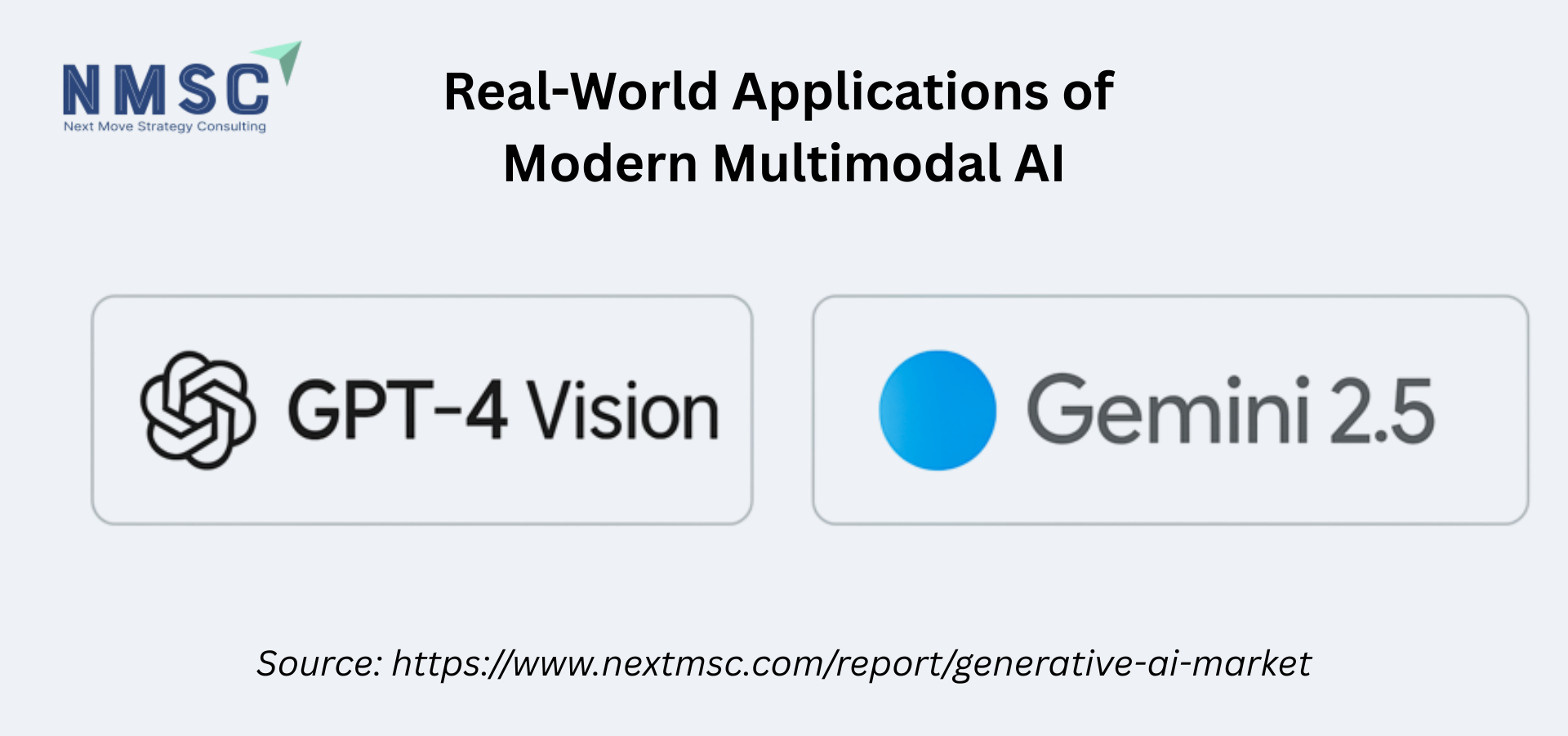








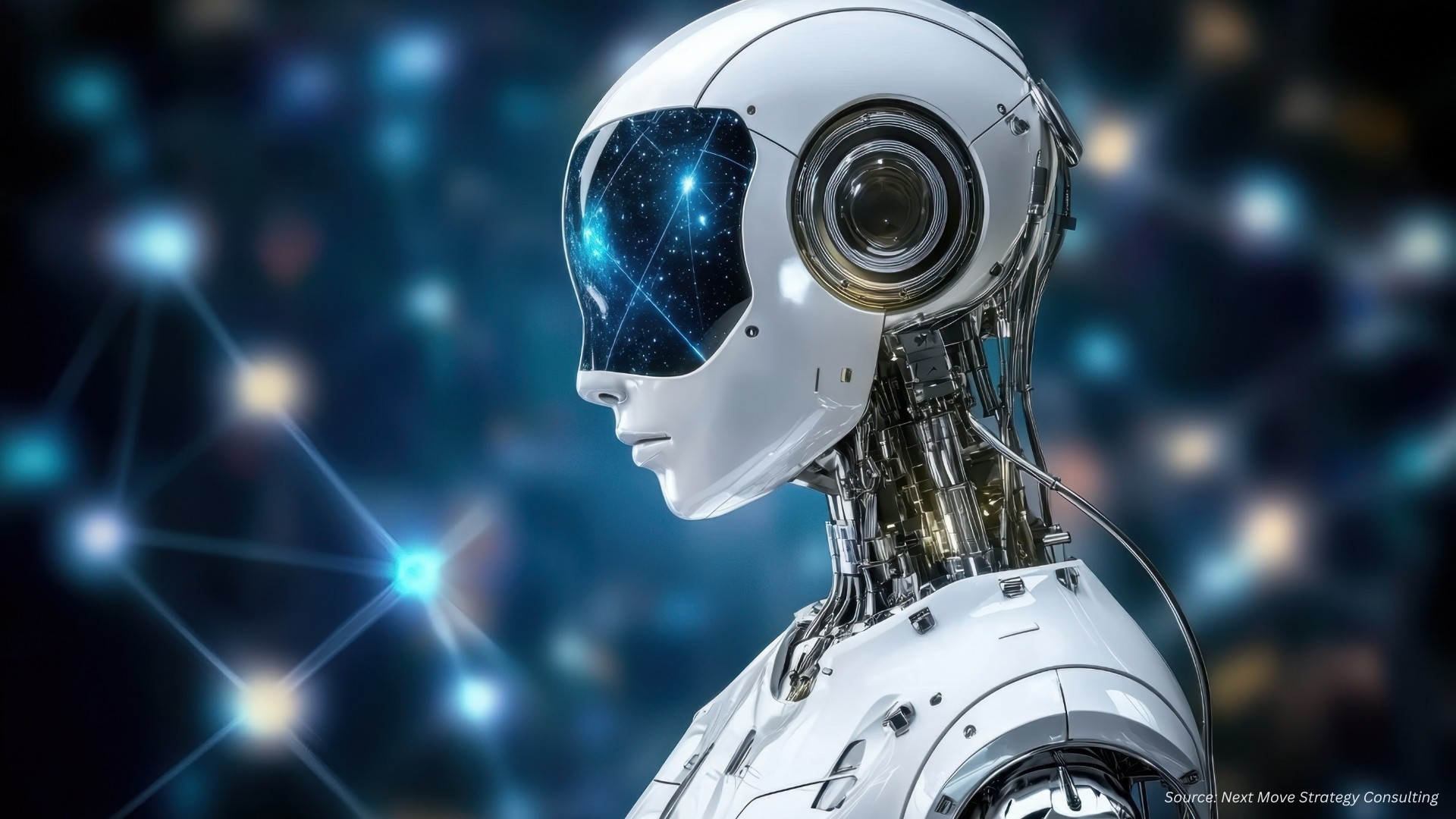

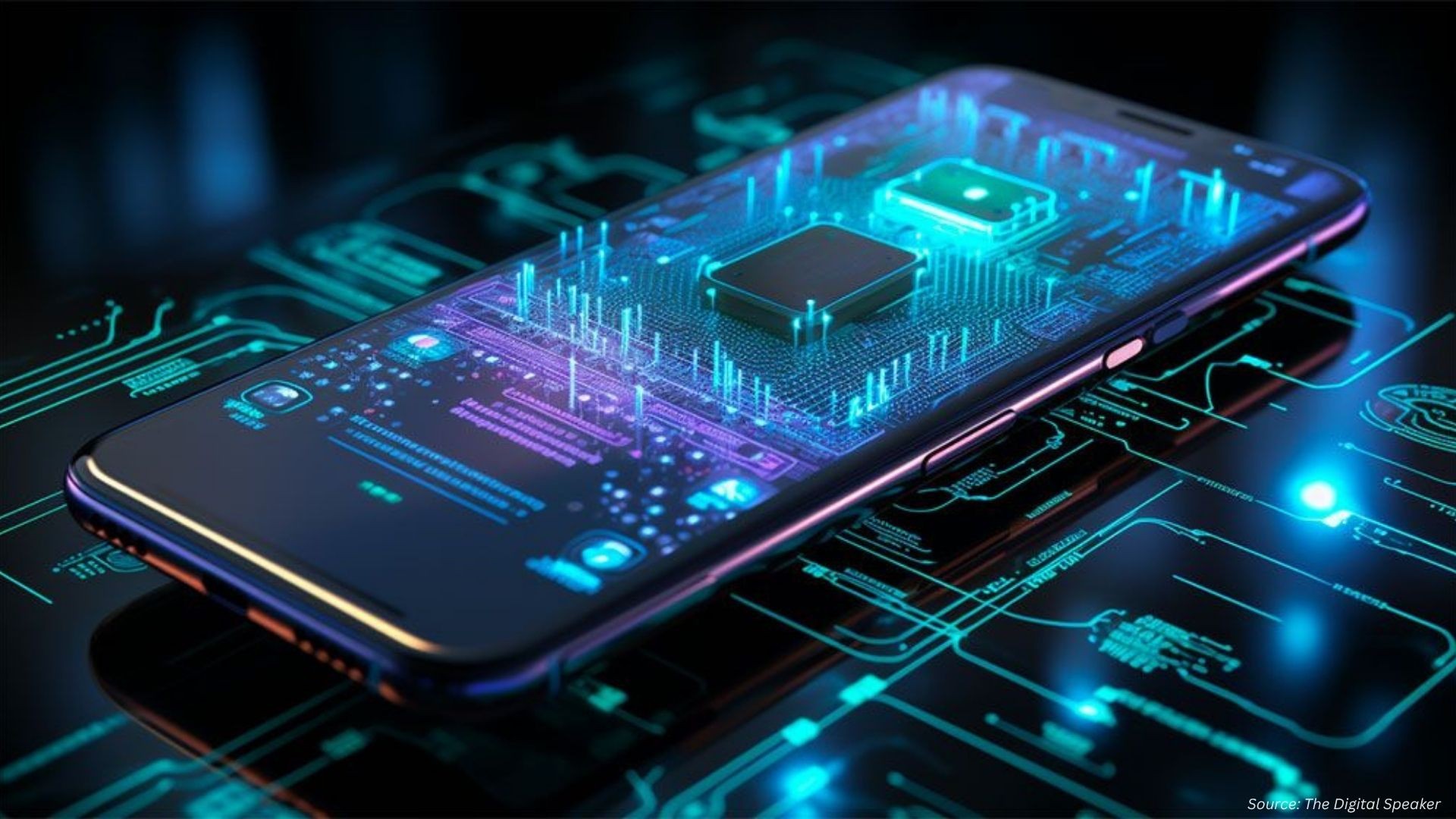
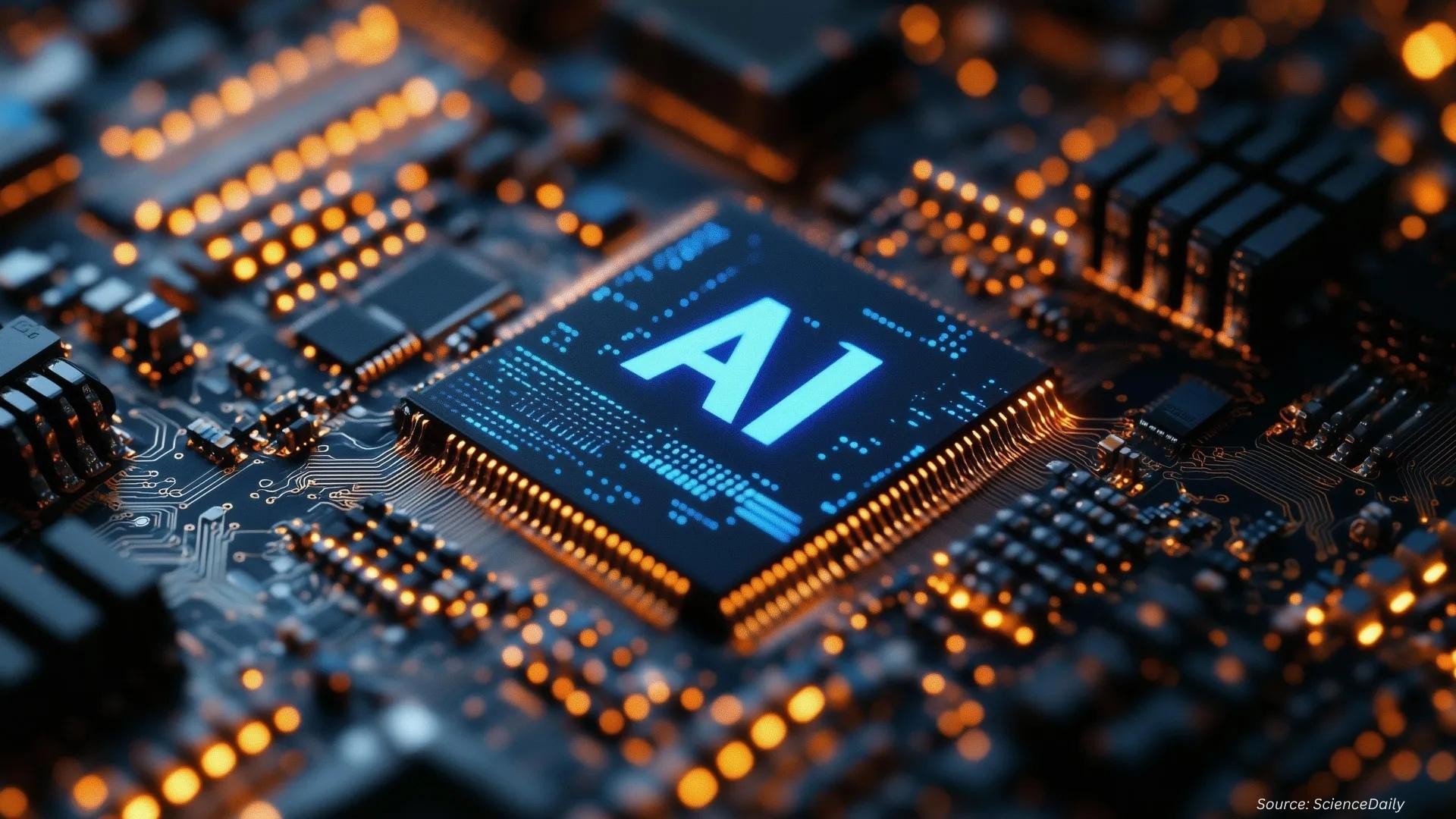




Add Comment